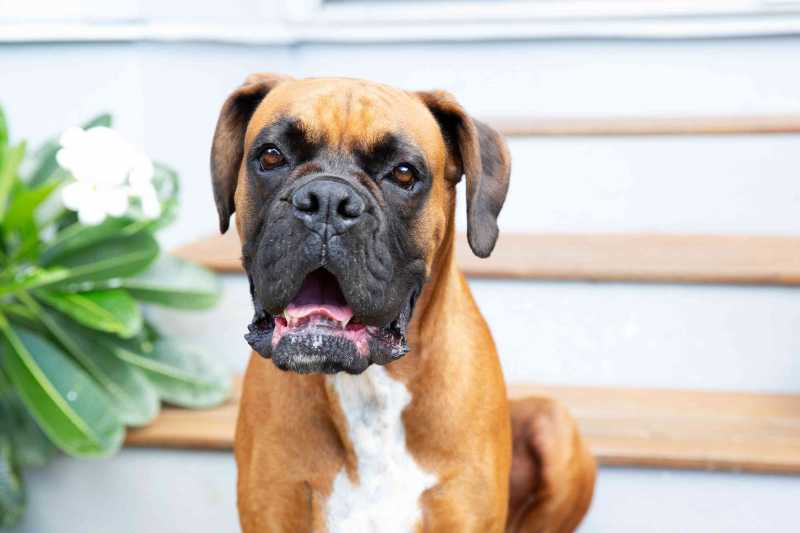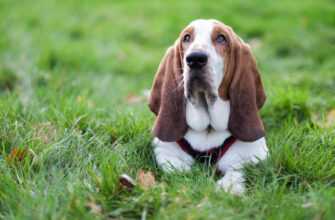Some dog breeds are more likely than others to cause reactions in people with allergies. Meanwhile, other breeds are considered hypoallergenic and might be a better bet if you or a member of your household suffers from allergies. Take a closer look at why people with allergies should steer clear of certain dogs.
Most people assume that the less hairy a dog is, the less likely they are to set off allergies. It’s not true. The hair isn’t the problem as much as it is their dander and saliva. All canines produce dander—the dead skin that flakes from the body. Dander clings to dog hairs, so pooches that naturally shed a lot leave more dander around the house. Breeds prone to drooling tend to be problematic, too, since they will spread more saliva around the home. These 10 popular breeds have the highest likelihood of causing a problem for people with pet allergies.
Tip
Even dogs labeled as hypoallergenic can trigger an allergic reaction; there are no guarantees. Some canine lovers with allergies manage their triggers with visits to the allergist, filtering the air at home, and removing carpeting.
Basset Hound
Basset hounds are generally sweet, lovable, and mild-mannered, with a characterful stubborn streak. They are one of the most favored hounds, but not necessarily the right choice for people with allergies. They have generous jowls and skin folds and are champion droolers. Their saliva is more likely to find its way onto your skin, soft furnishings, and other items in the home. This increased potential for exposure puts this breed at higher risk for triggering allergies. And for a double whammy, bassets have a short coat but shed a lot, meaning more hair and dander around the house.
Breed Overview
- Group: Hound (AKC)
- Height: Less than 15 inches
- Weight: 40 to 65 pounds
- Coat and Color: Short, smooth coat; coat color includes combinations of black, white, brown, tan, lemon, mahogany, and red
- Life Expectancy: 10 to 12 years
Doberman Pinscher
If you are a big dog lover looking for a smart and trainable protector, a Doberman would be a perfect choice—as long as you don’t have allergies. This breed frequently triggers flare-ups. These dogs have a thin, single coat, and their shedding is moderate rather than excessive, but they’re big dogs with more hair and dander. Dobies are also prone to allergies and skin sensitivities, more than your average breed. Dog skin allergies mean dry and flaky skin and larger amounts of dander deposits around the house.
Breed Overview
- Group: Working (AKC)
- Height: 24 to 28 inches
- Weight: 65 to 100 pounds
- Coat and Color: Short, smooth coat in black, red, blue, or fawn with rust markings
- Life Expectancy: 10 to 12 years
German Shepherd
German shepherds are one of the most enduringly popular breeds. They’re smart, eager to please, devoted, and brave. Unfortunately, this dog has been known to trigger bad allergic reactions. They’re one of the most excessive shedders, regardless of whether you get a long- or a short-haired one. Their hairs get everywhere, especially when they drop their coat twice a year. This big dog sheds masses of hair, which inevitably results in a lot of dander in the environment.
Breed Overview
- Group: Herding (AKC)
- Height: 22 to 26 inches
- Weight: 60 to 100 pounds
- Coat and Color: Thick undercoat and a dense, slightly wavy or straight outer coat with tan and black or red and black coloring
- Life Expectancy: 9 to 13 years
Siberian Husky
Huskies are another prevalent breed. Strikingly beautiful, athletic, and friendly, they are well-suited to very active households but can be problematic if there is a person with allergies in the home. Huskies and other double-coated breeds are known for depositing masses of hair around the home. Their thick layers of fur keep them warm in their native Arctic homelands. These dogs often top the list of excessive shedders.
Breed Overview
- Group: Working (AKC)
- Height: 20 to 23 inches
- Weight: 45 to 60 pounds for males; 35 to 50 pounds for females
- Coat and Color: Thick double coat that comes in a variety of colors, including combinations of black, gray, white, and tan
- Life Expectancy: 12 to 15 years
Labrador Retriever
The Labrador Retriever tops the American Kennel Club’s list of most popular breeds every year. These dogs are smart, loyal, wonderful family pets. Sadly, however, they are known for frequently triggering human allergies. Their double coat may be relatively short, but it’s dense and sheds profusely. They’re also known for often suffering from dry, flaky skin. The silver lining is that if you let your water-loving Lab swim frequently, it may reduce the dander concentration level in the home’s air, potentially decreasing the frequency of allergy flare-ups.
Breed Overview
- Group: Sporting (AKC)
- Height: 21 to 24 inches
- Weight: 55 to 80 pounds
- Coat and Color: Smooth, water-resistant coats; black, chocolate, or yellow
- Life Expectancy: 10 to 12 years
Pekingese
Pekingese fans love this breed for their affectionate, loyal, and spirited personalities. Their long shedding coat presents a problem for people with allergies, though, and the breed is known for being rather stubborn when it comes to house training. Dander and saliva aren’t the only allergy triggers; dog urine is, too. If your Peke is marking around the house, this behavior increases the chances of allergy flare-ups. A good enzymatic stain and odor remover will be necessary for your cleaning arsenal to neutralize traces of urine.
Breed Overview
- Group: Toy (AKC)
- Height: 6 to 9 inches
- Weight: Up to 14 pounds
- Coat and Color: Long, thick double coat that is gold, sable, red, gray, black, tan, or cream
- Life Expectancy: 12 to 14 years
Pug
Pug are small, short-coated dogs that shed year-round. Their wrinkled, flat snout is prone to gathering a lot of slobber around their jowls. Pugs are also prone to having sensitive skin and are susceptible to allergies, resulting in dry skin and more dander. Their skin folds can contribute to the development of bacterial infections, too. If your pug is itchy and uncomfortable, they are more likely to rub up against soft furnishings and carpets.
Breed Overview
- Group: Toy (AKC)
- Height: 10 to 13 inches
- Weight: 14 to 18 pounds
- Coat and Color: Short, smooth coat that typically comes in fawn or black
- Life Expectancy: 12 to 15 years
Saint Bernard
Saint Bernards are sometimes called the nanny dog because of their gentle and loyal temperament, especially with families. Still, they are the triple whammy when it comes to potentially triggering allergies. They’re a giant breed. The bigger the dog, the more dander produced. This breed sheds a lot, circulating dander all over the home. And, when it comes to dog drool, few dogs will beat Saint Bernards in this department. Saliva gets everywhere with this breed.
Breed Overview
- Group: Working (AKC)
- Height: 26 to 30 inches
- Weight: 120 to 180 pounds
- Coat and Color: Short and smooth or long and silky coat white with red, brown or brindle markings; a black “mask” is typically seen
- Life Expectancy: 8 to 10 years
Cocker Spaniel
Cocker spaniels (and other spaniel breeds) were bred as bird hunting dogs. Over time, they evolved into the perfect mid-sized family dog, except if you have allergies. These dogs have stunning, long-haired coats that shed dander from their fur, and they tend to drool, too. This breed is also prone to skin allergies, which can ultimately lead to even more dander getting spread into the air.
Breed Overview
- Group: Sporting (AKC)
- Height: 14 to 15 inches tall at the shoulder
- Weight: 20 to 30 pounds
- Coat and Color: Silky and flat or slightly wavy; short and fine on the head, medium length on the body, and well-feathered on the ears, chest, belly, and legs; black, ASCOB (any solid color other than black), or parti-color (black and white, brown and white, red and white, and tri-color)
- Life Expectancy: 12 to 15 years
Boxer
Boxers are energetic and well-matched for families with playful, young children. They drool a lot and lick their fur and skin often, leaving dried-on saliva on their coat. Boxers shed their dander-laden, short-haired hair year-round. These are all red flags for allergy sufferers.
Breed Overview
- Group: Working (AKC)
- Height: 1 foot, 9 inches to 2 feet, 1 inch at the shoulder
- Weight: 55 to 70 pounds
- Coat and Color: Short coat; fawn and brindle are the standard colors; standard markings include a black mask, a black mask with white markings, and white markings
- Life Expectancy: 10 to 12 years
Breeds to Consider
You know the dogs you should avoid if you have allergies, but what if you have mild allergies and wish to consider dogs that are less problematic? Before you get a dog, look into curly-haired breeds or visit the home of a poodle, bichon frise, or Portuguese water dog; these breeds do not drool much, if at all, and shed less than others.

 Home
Home Animal Adoption
Animal Adoption Animal Names
Animal Names Cats
Cats Dogs
Dogs





















